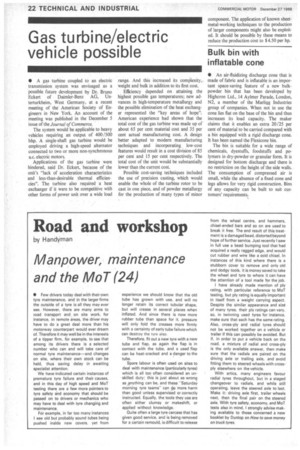Gas turbine/electric vehicle possible
Page 24

If you've noticed an error in this article please click here to report it so we can fix it.
• A gas turbine coupled to an electric transmission system was envisaged as a possible future development by Dr. Bruno Eckert of Daimler-Benz AG, Unterturkheim, West Germany, at •a recent meeting of the American Society of Engineers in New York. An account of the meeting was published in the December 5 issue of the Journal of Commerce.
The system would be applicable to heavy vehicles requiring an output of 400/500 bhp. A single-shaft gas turbine would be employed driving a high-speed alternator connected to two or more non-synchronous a.c. electric motors.
Applications of the gas turbine were hindered, said Dr. Eckert, because of the unit's "lack of acceleration characteristics and less-than-desirable thermal efficiencies". The turbine also required a heat exchanger if it were to be competitive with other forms of power unit over a wide load range. And this increased its complexity,. weight and bulk in addition to its first cost.
Efficiency depended on attaining the highest possible gas temperatures; new advances in high-temperature metallurgy and the possible elimination of the heat exchanger represented the "key areas of hope". American experience had shown that the total cost of the gas turbine was made up of about 65 per cent material cost and 35 per cent actual manufacturing cost. A design better adapted to modern manufacturing techniques and incorporating low-cost features would result in a cost division of 85 per cent and 15 per cent respectively. The total cost of the unit would be substantially lower than the current cost.
Possible cost-saving teohniques included the use of precision casting, which would enable the whole of the turbine rotor to be cast in one piece, and of powder metallurgy for the production of many types of minor component. The application of known sheetmetal-working techniques to the production of larger components might also be exploited. It should be possible by these means to reduce the production cost to $4.50 per hp.












































































